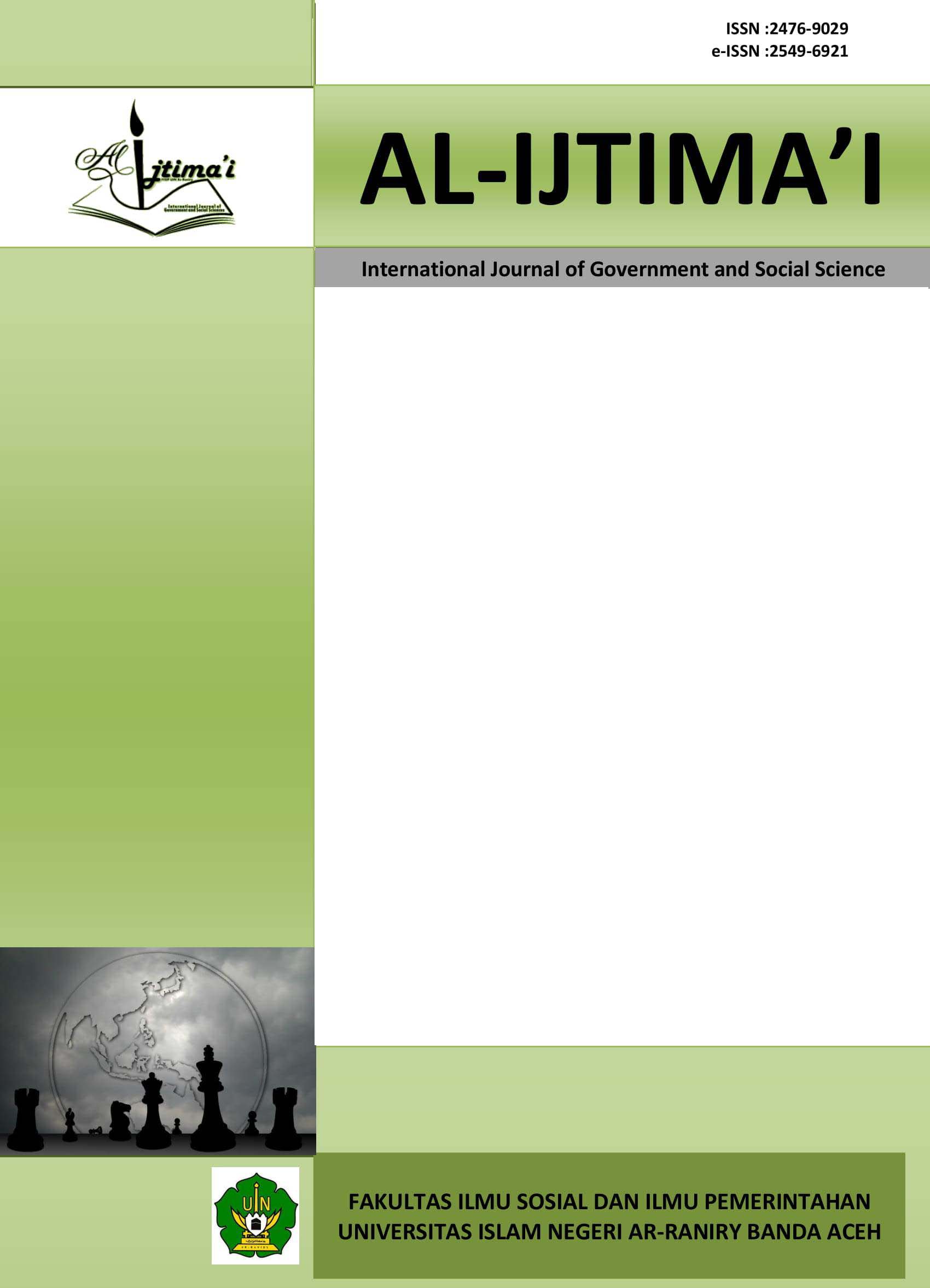WHAT DRIVES WOMEN TO BECOME HAMLET'S HEAD? A STUDY OF THE DAYAH BAROE VILLAGE IN ACEH
DOI:
https://doi.org/10.22373/jai.v9i1.2668Keywords:
Female Leadership, Education Level, Emotional Empathy, Female-Based Agenda, Women’s ParticipationAbstract
This study aims to explore the primary factors that encourage women's participation in village administration and the effect of women's leadership as hamlet chiefs on the government of Dayah Baro Village, Delima District, Pidie Regency. This study employed a qualitative methodology and utilized observation and interviews to collect data. The results of this study indicate that the level of Education and emotional empathy possessed by female hamlet leaders encourage their participation in village administration. Consequently, the effect of women's leadership in government is that they reform the village agenda by implementing numerous women-centered agendas. In addition, their presence in the village government structure correlates positively with increased women's participation in Dayah Baroe Village due to the ease of interaction and the numerous women-based agendas facilitated by the leaders of these women's hamlets.
References
Beaman, L., Duflo, E., Pande, R., & Topalova, P. (2012). Female leadership raises aspirations and educational attainment for girls: A policy experiment in India. Science, 335(6068), 582–586. https://doi.org/10.1126/science.1212382
Daulay, H., & Saladin, T. I. (2018). Gender and Patriarchi Issues in Women’s Village Leadership and Women’s Village Apparatus Domination in Plantation Community of North Sumatra. 129(Icsps 2017), 359–363. https://doi.org/10.2991/icsps-17.2018.77
Finau, S. P. (2017). WOMEN ’ S LEADERSHIP IN TRADITIONAL VILLAGES IN SAMOA : THE CULTURAL , SOCIAL, AND RELIGIOUS CHALLENGES By FINAU A thesis submitted to the Victoria University of Wellington in fulfilment of the requirements for the degree of Doctor of Ph. Victoria University of Wellington.
Gangadharan, L., Jain, T., Maitra, P., & Vecci, J. (2016). Social identity and governance: The behavioral response to female leaders. European Economic Review, 90, 302–325. https://doi.org/10.1016/j.euroecorev.2016.01.003
Gunawan, I. (2013). Metode Penelitian Kualitatif. In Pendidikan. Bumi Aksara. http://fip.um.ac.id/wp-content/uploads/2015/12/3_Metpen-Kualitatif.pdf
Head of Baroh Hamlet. Interview. Conducted by Arifa Maghfirah. 30 Agustus 2022.
Head of Puntong Hamlet. Interview. Conducted by Arifa Maghfirah. 24 Agustus 2022.
Head of Teungoh Hamlet. Interview. Conducted by Arifa Maghfirah. 30 Agustus 2022.
Head of Tunong Hamlet. Interview. Conducted by Arifa Maghfirah. 26 Agustus 2022.
Janssens, W. (2010). Women’s empowerment and the creation of social capital in Indian villages. World Development, 38(7), 974–988. https://doi.org/10.1016/j.worlddev.2009.12.004
Krishna, A. (2002). Enhancing political participation in democracies: What is the role of social capital? Comparative Political Studies, 35(4), 437–460. https://doi.org/10.1177/0010414002035004003
Lestari, P., Hardi, I., Eka, W., & Mulyaningsih, F. (2021). Political Construction of Women in Kemiren Village. Proceedings of the 6th International Conference on Education & Social Sciences (ICESS 2021), 578(Icess), 265–271. https://doi.org/10.2991/assehr.k.210918.049
Manikoth, N., Gajjar, K., & Mendonca, V. (2018). It Takes a Village: Collaborations and Partnerships Empowering Women in India for Leadership. In Indian Women Leadership (pp. 109–130). http://www.palgrave.com/gp/series/15062
Margaret, P. (2017). Women Education in India. 07(12), 17531–17535.
Nadim, J. S., & Nurlukman, A. D. (2017). The Impact of Women Empowerment on Poverty Reduction in Rural Area of Bangladesh: Focusing on Village Development Program. Journal of Government and Civil Society, 1(2), 135–157. https://jurnal.umt.ac.id/index.php/jgs/article/view/444
Nurhafizah, S., Akhyar, Z., & Suroto, S. (2021). Pandangan dan Dukungan Masyarakat Terhadap Kepemimpinan Kepala Desa Perempuan (Studi Kasus: Desa Taras Padang Kecamatan Labuan Amas Selatan Kabupaten Hulu Sungai). PAKIS (Publikasi Berkala Pendidikan Ilmu Sosial), 1(2), 81–93. https://doi.org/10.20527/pakis.v1i2.4011
Paul, R., Mohajan, B., Mahin Uddin, M., Amjad, M. D., & Reyad, H. (2019). Factors Affecting Women Participation in Local Government Institution: a Case Study of Bangladesh Perspective. Original Research Article Journal of Global Research in Education and Social Science, 13(3), 94–105. www.ecs.gov.bd
Sajeda, A., & Anne, P. R. (1994). Gender Inequality within Households : The Impact of a Women ’ s Development Programme in 36 Bangladeshi Villages. The Bangladesh Deleopment Studies, 22(2), 121–154.
Sari, N. (2020). AFFIRMATIVE ACTION DI ACEH : KENDALA DAN UPAYA PARTAI POLITIK DALAM MENINGKATKAN KETERWAKILAN PEREMPUAN ( UUPA ) dan Peraturan Pemerintah Nomor 20 Tahun 2007 tentang Partai Politik Lokal di lokal , yang kemudian hal ini juga semakin dikukuhkan dengan peng. 1(1), 45–54.
Toussaint, L., & Webb, J. R. (2005). Gender differences in the relationship between empathy and forgiveness. Journal of Social Psychology, 145(6), 673–685. https://doi.org/10.3200/SOCP.145.6.673-686
Downloads
Published
How to Cite
Issue
Section
License
Authors who publish with this journal agree to the following terms:
- Authors retain copyright and grant the journal right of first publication with the work simultaneously licensed under a Creative Commons Attribution License (CC-BY-SA) that allows others to share the work with an acknowledgment of the work's authorship and initial publication in this journal (See The Effect of Open Access);
- Authors are permitted and encouraged to post their work online (e.g., in institutional repositories or on their website) prior to and during the submission process, as it can lead to productive exchanges, as well as earlier and greater citation of published work;
- Authors are able to enter into separate, additional contractual arrangements for the non-exclusive distribution of the journal's published version of the work (e.g., post it to an institutional repository or publish it in a book), with an acknowledgment of its initial publication in this journal.
















